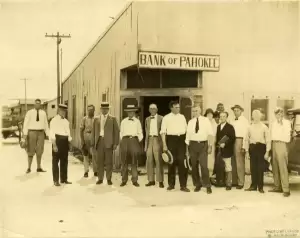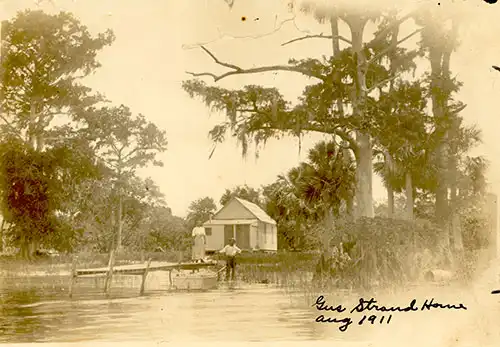Growth to 1939

The 1939 Guide to Florida by the Works Progress Administration reported the populations of Palm Beach County’s municipalities. In the western communities, Belle Glade had 1,646 residents, including Lawrence Will (1893-1977), who wrote several books about Lake Okeechobee and life in the Glades. South Bay was still small, with 235 residents. Pahokee was thriving once again, with a population of 2,256:
From Christmas to April, Pahokee is a 24-hour town; long trains of refrigerated cars roll out for northern markets day and night; the streets are noisy and crowded; bars, restaurants and gambling places are seldom closed. … Itinerant pickers, both white and Negro, known as “traveling hands,” swarm into this region at harvest time, as into other fruit and vegetable growing districts of the state, occupying tents, rows of tumbledown cottages, and ramshackle boarding houses.
Lawrence Will
After the roller-coaster ride of the boom and bust eras and the long, difficult Depression that followed, Palm Beach County recovered with the rest of Florida and the United States. During this brief pause, a storm began among European nations that would cross the Atlantic before long.
Belle Glade Mail Route
In 1918, star route mail service was approved to service towns around Lake Okeechobee three times a week. A mail boat was to make deliveries from West Palm Beach to Canal Point, Pahokee, Bacom Point, Kraemer Island, and Ritta Island; Torrey Island was considered inaccessible at the time.
By 1929, the service was daily and included Loxahatchee, Canal Point, Belle Glade, Chosen, and South Bay, under contractor Emery Lee DeVane. Ritta was returned to this route at this time after being part of the Sebring-Moore Haven route.

Financial Survivors
Like First National, the Bank of Pahokee may have survived because it was not old enough to have accumulated many loans based on artificially inflated property values. Both the bank and the Town of Pahokee were established in 1922. Although now owned by PNC Bank, the Bank of Pahokee has retained its historic name and is the oldest bank in Palm Beach County.
The Future
The beginning of the 1920s witnessed incredible growth and by the end of the decade it had ended. Palm Beach County experienced economic decline before the nation entered the Great Depression brought on by the Stock Market crash in 1929. The 1930s brought both job loss and continued growth albeit slowly. It was not until World War II and after that Palm Beach County would experience economic, real estate, business, and population growth.

